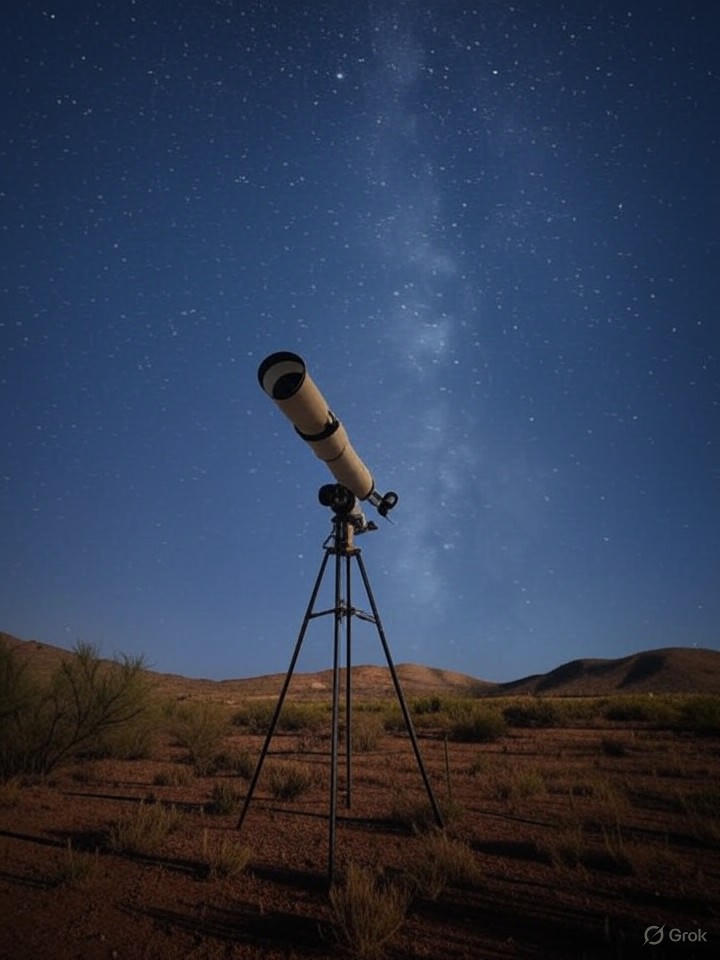Science
Remote Telescopes Transform Amateur Astronomy Experience

In West Texas, a groundbreaking initiative is reshaping amateur astronomy. Starfront Observatories has established a facility that houses hundreds of robotic telescopes, enabling enthusiasts to control these instruments remotely via high-speed internet. This innovative setup allows users to capture breathtaking images of galaxies, nebulae, and distant stars without having to contend with light pollution or unpredictable weather from their own backyards.
Founded by a passionate group of astrophotographers, Starfront has quickly become known as one of the largest remote observatories in the world. Users send their telescopes to the site, where they are installed on stable piers under some of the darkest skies in the continental United States. For a monthly fee, which begins at around $100, users benefit from maintenance, power, and data links, allowing for real-time imaging from virtually anywhere.
The Emergence of Remote Astronomy
Starfront’s model builds on earlier remote hosting services but takes it to a new level. According to a report from PetaPixel, the observatory was created by a collaborative effort of photographers who pooled resources to construct a facility capable of hosting over 400 instruments. This communal approach not only reduces costs but also promotes a network of shared knowledge among users, ranging from beginners to experienced astrophotographers pursuing rare celestial events.
The technology employed at Starfront is impressive. Automated domes shield telescopes from harsh weather, while advanced software enables scripted observations, allowing multiple targets to be queued overnight. High-bandwidth fiber optics facilitate rapid transfer of large image files—often several gigabytes in size—directly to users’ computers for processing. This technological sophistication has blurred the line between amateur and professional astronomy, drawing comparisons to institutional observatories.
Addressing Challenges in Astronomy
Despite its success, Starfront faces challenges, particularly from the growing presence of satellite constellations like SpaceX’s Starlink. These satellites can streak across night skies, interfering with long-exposure photography. An article in the New York Times highlights how astronomers are adapting by employing software filters, although the issue raises broader concerns about orbital clutter. Starfront has countered this by providing tools that allow users to schedule imaging sessions around satellite passes, ensuring the integrity of captured data.
Maintenance in such a remote area requires ingenuity. On-site technicians manage everything from telescope alignment adjustments to dust removal, effectively minimizing downtime. Users report increased productivity, with some assembling portfolios that rival those obtained from major telescopes. Starfront’s plans for expansion, including the addition of more domes, reflect confidence in continued demand for its services.
From an economic perspective, Starfront represents a strategic intersection of technology and passion-driven markets. Subscription options cater to a variety of users, including educational institutions and small businesses that utilize the data for research or commercial astrophotography. This accessibility fosters a broader engagement with astronomy.
Educationally, the observatory is making significant impacts. Remote access enables schools in light-polluted urban areas to participate in live sessions, exposing students to real-time astronomy. Partnerships with platforms like Cloudy Nights enhance this experience by sharing insights and tips, creating a vibrant online community.
Looking ahead, Starfront is well-positioned to incorporate emerging technologies such as AI-driven image enhancement. This innovation could automate much of the post-processing workflow, potentially allowing even casual users to produce publication-quality images. As space exploration efforts ramp up, with notable events like NASA’s upcoming missions, facilities like Starfront will play an essential role in providing ground-based support that complements orbital telescopes.
Critics caution against over-reliance on remote systems, arguing that hands-on stargazing fosters a deeper connection to the cosmos. Yet, for many, Starfront’s combination of convenience and capability offers an irresistible opportunity. With its Texas location providing optimal conditions, the observatory stands as a testament to innovation, ensuring the stars remain within reach for all astronomy enthusiasts.
-

 Technology5 months ago
Technology5 months agoDiscover the Top 10 Calorie Counting Apps of 2025
-

 Health2 months ago
Health2 months agoBella Hadid Shares Health Update After Treatment for Lyme Disease
-

 Health3 months ago
Health3 months agoErin Bates Shares Recovery Update Following Sepsis Complications
-

 Technology4 months ago
Technology4 months agoDiscover How to Reverse Image Search Using ChatGPT Effortlessly
-

 Technology1 month ago
Technology1 month agoDiscover 2025’s Top GPUs for Exceptional 4K Gaming Performance
-

 Technology2 months ago
Technology2 months agoElectric Moto Influencer Surronster Arrested in Tijuana
-

 Technology5 months ago
Technology5 months agoMeta Initiates $60B AI Data Center Expansion, Starting in Ohio
-

 Technology5 months ago
Technology5 months agoRecovering a Suspended TikTok Account: A Step-by-Step Guide
-

 Health4 months ago
Health4 months agoTested: Rab Firewall Mountain Jacket Survives Harsh Conditions
-

 Lifestyle5 months ago
Lifestyle5 months agoBelton Family Reunites After Daughter Survives Hill Country Floods
-

 Technology4 months ago
Technology4 months agoHarmonic Launches AI Chatbot App to Transform Mathematical Reasoning
-

 Technology3 months ago
Technology3 months agoUncovering the Top Five Most Challenging Motorcycles to Ride




















